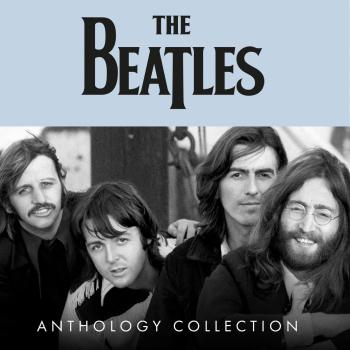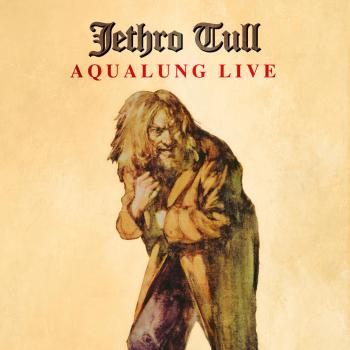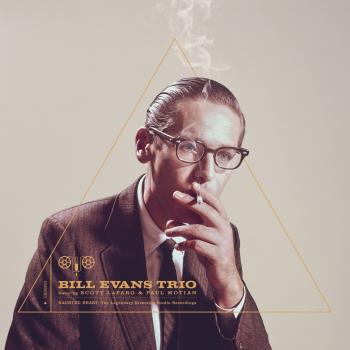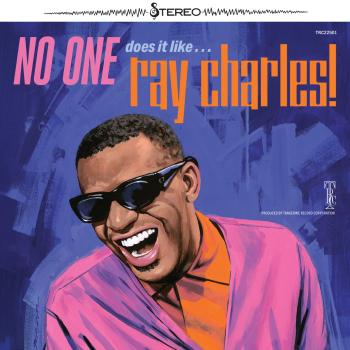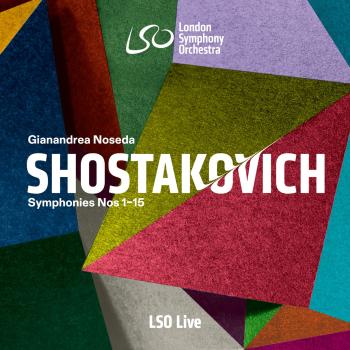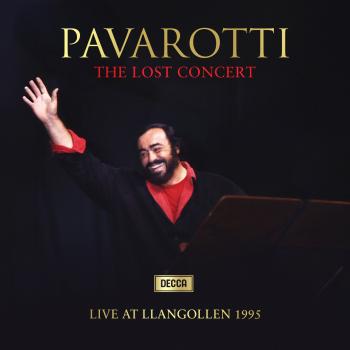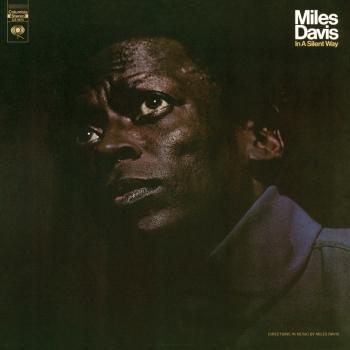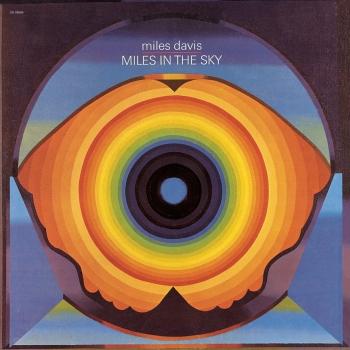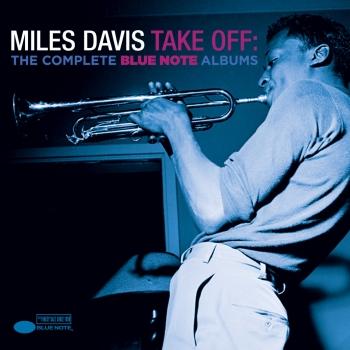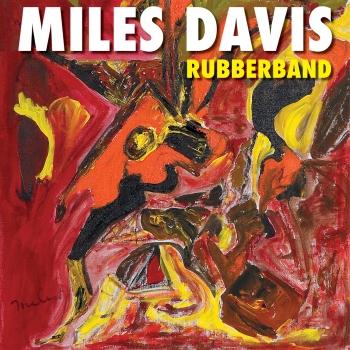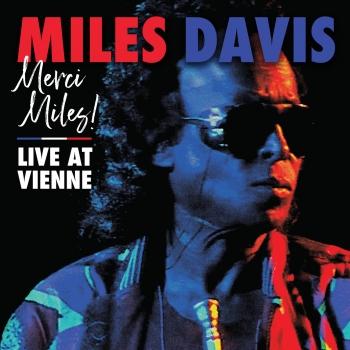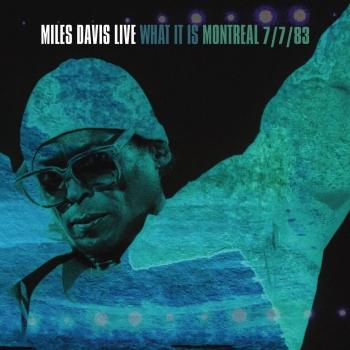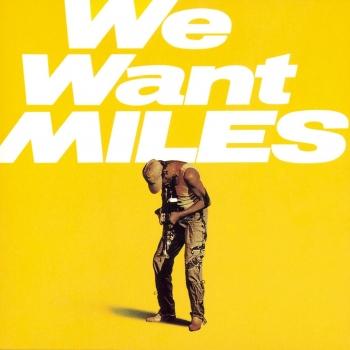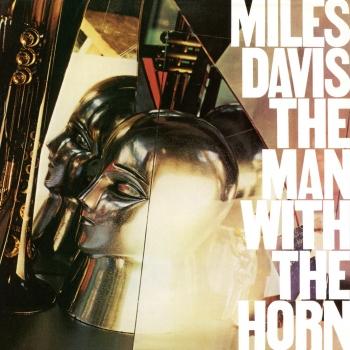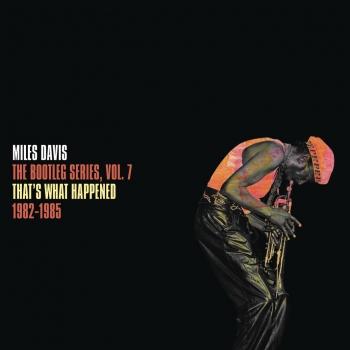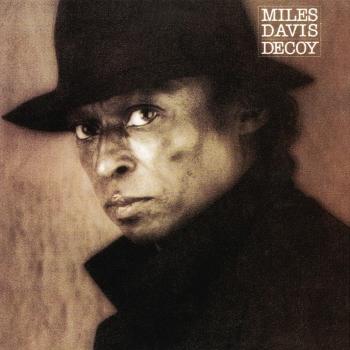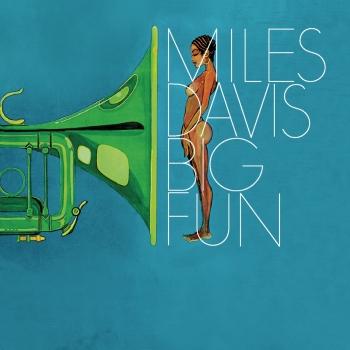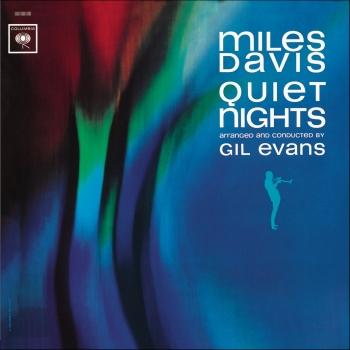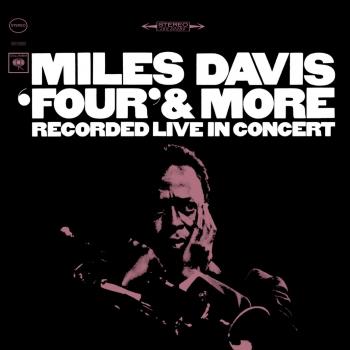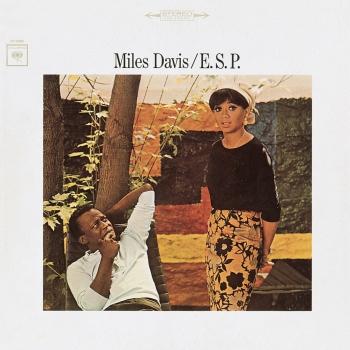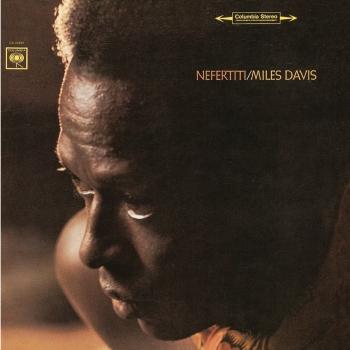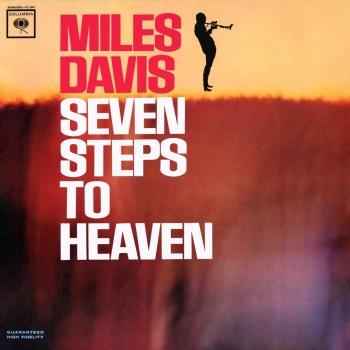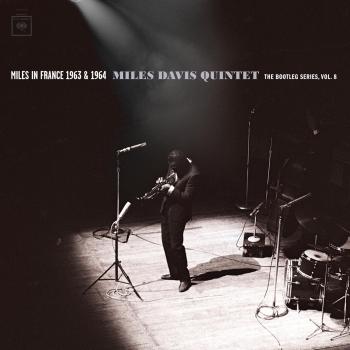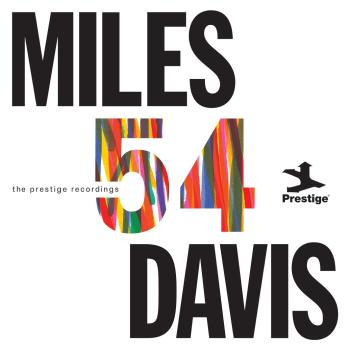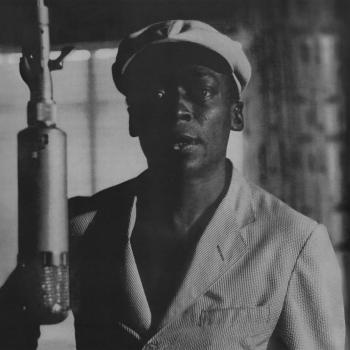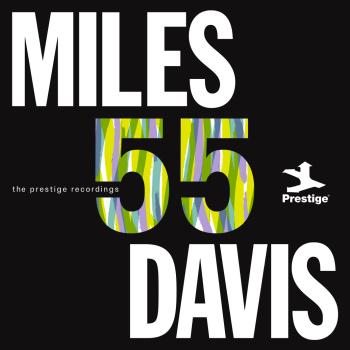
Miles at The Fillmore: Miles Davis 1970: The Bootleg Series, Vol. 3 (Remastered) Miles Davis
Album Info
Album Veröffentlichung:
2014
HRA-Veröffentlichung:
26.11.2025
Das Album enthält Albumcover Booklet (PDF)
Entschuldigen Sie bitte!
Sehr geehrter HIGHRESAUDIO Besucher,
leider kann das Album zurzeit aufgrund von Länder- und Lizenzbeschränkungen nicht gekauft werden oder uns liegt der offizielle Veröffentlichungstermin für Ihr Land noch nicht vor. Wir aktualisieren unsere Veröffentlichungstermine ein- bis zweimal die Woche. Bitte schauen Sie ab und zu mal wieder rein.
Wir empfehlen Ihnen das Album auf Ihre Merkliste zu setzen.
Wir bedanken uns für Ihr Verständnis und Ihre Geduld.
Ihr, HIGHRESAUDIO
- 1 Introduction (Live at Fillmore East, New York, NY - June 17, 1970) 00:04
- 2 Directions (Live at Fillmore East, New York, NY - June 17, 1970) 10:24
- 3 The Mask (Live at Fillmore East, New York, NY - June 17, 1970) 11:04
- 4 It's About That Time (Live at Fillmore East, New York, NY - June 17, 1970) 10:45
- 5 Bitches Brew (Live at Fillmore East, New York, NY - June 17, 1970) 13:41
- 6 The Theme (Live at Fillmore East, New York, NY - June 17, 1970) 00:36
- 7 Paraphernalia (Live at Fillmore West, San Francisco, CA - April 1970) 11:02
- 8 Footprints (Live at Fillmore West, San Francisco, CA - April 1970) 11:13
- 9 Directions (Live at Fillmore East, New York, NY - June 18, 1970) 10:10
- 10 The Mask (Live at Fillmore East, New York, NY - June 18, 1970) 11:30
- 11 It's About That Time (Live at Fillmore East, New York, NY - June 18, 1970) 12:04
- 12 Bitches Brew (Live at Fillmore East, New York, NY - June 18, 1970) 11:57
- 13 The Theme (Live at Fillmore East, New York, NY - June 18, 1970) 01:30
- 14 Spanish Key (Encore) (Live at Fillmore East, New York, NY - June 18, 1970) 10:20
- 15 The Theme (Encore) (Live at Fillmore East, New York, NY - June 18, 1970) 00:28
- 16 Directions (Live at Fillmore East, New York, NY - June 19, 1970) 12:50
- 17 The Mask (Live at Fillmore East, New York, NY - June 19, 1970) 10:00
- 18 It's About That Time (Live at Fillmore East, New York, NY - June 19, 1970) 11:28
- 19 I Fall in Love Too Easily (Live at Fillmore East, New York, NY - June 19, 1970) 01:48
- 20 Sanctuary (Live at Fillmore East, New York, NY - June 19, 1970) 03:25
- 21 Bitches Brew (Live at Fillmore East, New York, NY - June 19, 1970) 12:38
- 22 The Theme (Live at Fillmore East, New York, NY - June 19, 1970) 00:38
- 23 Miles Runs the Voodoo Down (Live at Fillmore West, San Francisco, CA - April 1970) 13:20
- 24 Directions (Live at Fillmore East, New York, NY - June 20, 1970) 10:48
- 25 The Mask (Live at Fillmore East, New York, NY - June 20, 1970) 11:15
- 26 It's About That Time (Live at Fillmore East, New York, NY - June 20, 1970) 11:04
- 27 I Fall in Love Too Easily (Live at Fillmore East, New York, NY - June 20, 1970) 01:21
- 28 Sanctuary (Live at Fillmore East, New York, NY - June 20, 1970) 03:21
- 29 Bitches Brew (Live at Fillmore East, New York, NY - June 20, 1970) 09:39
- 30 Willie Nelson (Live at Fillmore East, New York, NY - June 20, 1970) 09:22
- 31 The Theme (Live at Fillmore East, New York, NY - June 20, 1970) 00:37
Info zu Miles at The Fillmore: Miles Davis 1970: The Bootleg Series, Vol. 3 (Remastered)
Miles Davis’ historic four-night stand at promoter Bill Graham’s legendary Fillmore East in New York City, June 17-20, 1970, is presented in its entire full-length unedited form for the first time as Miles At The Fillmore – Miles Davis 1970: The Bootleg Series Vol. 3.
At one of the most crucial moments in jazz and rock history, two months after the release of Miles’ groundbreaking double-album Bitches Brew in April 1970, he was beginning to discover – and be discovered by – the burgeoning rock audience that came of age in the late 1960s. Bitches Brew was a turning point for jazz and rock. Bill Graham had a long history of presenting jazz artists at the Fillmores but it was Miles who carried rock audiences to a new plateau.
In October 1970, Columbia Records released the 2-LP set Miles Davis At Fillmore, which consisted of performances culled from the four nights of shows at the Fillmore East (where Miles opened for fellow Columbia artist Laura Nyro). At that time the shows were edited to fit the LP format. The full unedited shows are now presented for the first time yielding 100-plus minutes of previously unreleased music.
The three additional bonus tracks add another 35 minutes of music, released here for the first time, recorded in April 1970, at the Fillmore West in San Francisco (where Graham put Miles and band on a bill with the Grateful Dead and Stone The Crows). Miles At The Fillmore – Miles Davis 1970: The Bootleg Series Vol. 3 now contains 135 minutes of previously unreleased music.
"Until now, the official recordings of Miles Davis' performances at the Fillmore East between June 17 and 20, 1970 have been limited to the double album Miles at the Fillmore. That set's producer Teo Macero, edited the recordings to create medleys of each night's music to four roughly 20-minute selections. This four-disc set contains all four concerts. There are 100 minutes of previously unreleased music from Wednesday through Saturday; an additional 35 minutes of unreleased music comes from a previous gig at the Fillmore West. On the FE shows,Davis' band opened for Laura Nyro. Bill Graham regularly booked jazz artists to play with rock and pop acts. At the time, Davis was actively courting the younger audience -- aided not only by Graham, but by FM DJs playing the just-released Bitches Brew. The band -- saxophonist Steve Grossman, Dave Holland on electric bass, drummer Jack DeJohnette, percussionist Airto Moreira, Chick Corea on electric piano, and Keith Jarrett on organ -- was loud and driving, its sound was drenched in wah-wah pedals; distortion was employed often. These dates are also historically significant because both keyboardists played in the group simultaneously for only three months. The program for each evening was basically the same: "Directions," "The Mask," "It's About That Time," "Bitches Brew," and "The Theme." But each disc offers a different bonus: an encore, an unexpected performance, or the added tracks from the Fillmore West gig. The charts are loose but focused, and the group's improvisational dynamic is breathtaking, entirely different each night. Davis is exceptionally strong. His playing is inventive, full of questions and muscular statements. Some notable solos occur on Wednesday's "It's About That Time," the Fillmore West's "Footprints" and "Paraphernalia," and the searing intensity displayed on "Directions," from Friday. Grossman's soprano playing is stunning on each version of "Bitches Brew"; his bluesy tenor playing is at its best on Thursday's "Spanish Key." Individually and collectively, DeJohnette and Holland add an extreme funkiness to the band's bottom. Their interplay is canny, full of nasty grooves -- check Thursday's "The Mask," or the throbbing pulse and roiling breaks on Friday's "Directions." Jarrett's colors, textures and stabs, add an entirely different dimension to the band's attack. Check the sinister vamping and spooky soloing on "Miles Runs the Voodoo Down" from the Fillmore West. Corea is alternately knotty and atmospheric. He can push the horns hard --as on Thursday's "Directions" -- or paint through Jarrett's wah-wah organ with an expressionist brush -- evidenced by Saturday's "Willie Nelson." Throughout his solos are risky and exploratory. Airto's vocal and percussion arsenal is wildly different, not only from tune to tune, but night to night. The sound is fantastic: balanced and detailed." (Thom Jurek, AMG)
Miles Davis, trumpet with Harmon mute
Steve Grossman, tenor saxophone, soprano saxophone
Chick Corea, Fender Rhodes electric piano with delay/fuzz pedals and ring modulator
Keith Jarrett, Fender Contempo Organ with delay/fuzz pedals + tambourine (Fillmore East tracks only)
Dave Holland, electric bass guitar with wah-wah pedal
Jack DeJohnette, drums
Airto Moreira, cuica, transverse flute, whistle, kazoo, shakers, bells, woodblock, tambourine
Recorded April 11, 1970 June 17–20, 1970 at Fillmore East, New York City; Fillmore West, San Francisco, CA (April 11, 1970 only)
Digitally remastered
Kaum ein anderer Musiker vermochte die Geschichte des Jazz derart nachhaltig zu beeinflussen, wie der am 26.05.1926 in Alton, Illinois geborene und in St. Louis aufgewachsene Miles Davis. Ohne den 'Prince of Darkness' wären die meisten Schlüsselentwicklungen des Jazz ab 1950 undenkbar gewesen. Mit unnachahmlicher Intonation und sparsamer melodischer Gestaltungskraft hat sich der Trompeter den Status einer Pop-Ikone erspielt.
Seine ersten wichtigen Gehversuche machte Miles in New York, wo er mit seinem musikalischen Vorbild Charlie Parker zusammentraf, in dessen Band er umgehend spielte. 1948 leitete der Trompeter bereits seine eigene Band, die mit Arrangements von Gil Evans zu den 'Birth Of The Cool'-Sessions führte. Neben seinen freelance Arbeiten gründete Miles Davis 1955 sein erstes Quintett bestehend aus Red Garland, Paul Chambers, Philly Joe Jones und John Coltrane. In den Jahren 1963-68 formierte er das zweite große Quintet, in welchem der junge Wayne Shorter am Saxophon brillierte (mit Herbie Hancock, Ron Carter und Tony Williams).
Die späten 60-er Jahre brachten unter Miles' Impuls die Wende hin zum Jazz Rock. Alben wie 'Bitches Brew' und 'We Want Miles' stehen paradigmatisch für diese Zeit. In der ersten Hälfte der 70-er Jahre veränderte der Ausnahmetrompeter häufig die Besetzungen seiner Band. In großzügig angelegten Gruppenimprovisationen integrierte er die vormals 'jazzfremden' Tablas, Sitar und diverse Percussioninstrumente. Den Sound seiner Trompete veränderte er mit dem Einsatz eines WahWah-Pedals. Die psychedelisch anmutende Musik dieser Zeit polarisierte das Publikum, viele Fans des 'frühen Miles' wollten den neuen 'elektrischen' Weg nicht mitvollziehen, doch Davis zielte auf ein junges, experimentierfreudiges Publikum.
Nach längerer Zurückgezogenheit aufgrund von Drogenproblemen kehrte der 'Prince of Darkness' in den frühen 80-er Jahren mit jungen Musikern zurück, seine Band wurde zum Sprungbrett für die wichtigsten Karrieren des aktuellen Jazz. Unter seinen Schülern waren John Scofield, Kenny Garrett, Darryl Jones und Marcus Miller. Der Bassist, Multi-Instrumentalist und Produzent Miller schuf mit Miles Davis die deutlich von der aktuellen Popmusik beeinflußten Spätwerke 'Tutu' und 'Amandla'. Diese Alben zeigen in vollendeten Produktionen das Hit-Potential des Trompeters, der in zahllosen Konzerten dieses Material immer neu als elektrisierender Improvisator präsentierte. Am 28.09.1991 starb der wichtigste Musiker des Jazz wenige Wochen nach seinem letzten Konzert an einer Lungenentzündung. Das posthum veröffentlichte Album 'Doo-Bop' wurde 1992 mit dem Grammy in der Kategorie 'Best R&B Instrumental Performance' ausgezeichnet.
Booklet für Miles at The Fillmore: Miles Davis 1970: The Bootleg Series, Vol. 3 (Remastered)

